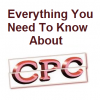SEO sucks. This is the usual reaction of people around us who are fed up with the unpredictable nature of search engine optimization and grieve at the sight of their website struggling hard to retain their rankings. Google is changing its signals faster than the speed of light but there are still some rooms for making improvements. Making some tweaks here and there can still help your website get some better visibility. Here we are going to share some SEO tweaks that may not lose their relevance anytime soon.
http://www.mywebsite.com/
http://mywebsite.com/
http://www.mywebsite.com/index.html
http://mywebsite.com/index.html
For the above four URL, canonical url should be – http://www.mywebsite.com/ and this code should be added at the <head></head> section of all the pages – <link rel=”canonical” href=”http://www.mywebsite.com/” />
Duplicate Meta Data: Though Google is voluntarily reducing its dependency on meta description, it is not a good idea to have thousands of pages with similar meta description. You need to make a point that all the pages have a different meta description. However, if the page consists of only charts or a list of names, it is better off with no meta description. Google will automatically generate meta descriptions automatically.
External Duplicate Content: If your website happens to harbor near similar content or duplicate content, you need to make sure that you are giving original website its credit. Google has a special tag for this. For say, if you have a news section in your website like this –
http://www.mywebsite.com/news/ and you are accustomed to publish near similar content, you need to give credit to the original source of the content. You need to add this code within the head section of the website:
<meta name=”original-source” content=”http://www.originalwebsource.com/original.html”>
However, if you are syndicating your article to some other websites, you are required to post this tag within the <head></head> section of all website pages where you are supposed to publish the articles:
<meta name=”syndication-source” content=”http://www.mywebsite.com/news/my-original-article.html”>
Use Microformat: yes, Microformat is the way go. The modern search industry is going to get ruled by Microformat and therefore, you cannot shy away from it. There is enough Guide available for implementing Microformat for your website. For an example, you can use this code in the Contact us page rather than simple HTML code. It will help search engines offer better results:
<div itemscope itemtype=”http://schema.org/LocalBusiness”>
<h1><span itemprop=”name”>Your Company name</span></h1>
<span itemprop=”description”> Add a nice description about the location and other stuffs</span>
<div itemprop=”address” itemscope itemtype=”http://schema.org/PostalAddress”>
<span itemprop=”streetAddress”>Add Information</span>
<span itemprop=”addressLocality”>Add Information</span>,
<span itemprop=”addressRegion”>Add Information</span>
</div>
Phone: <span itemprop=”telephone”>Add Information</span>
</div>
There are zillions of ways, you can make your website stands apart. Keep exploring at – http://schema.org/docs/full.html
Use Authorship: This is another brand new addition to google search results. This will make the image of the author appear along with the search result. Looks really cool and all you need to do is to create a Google profile and link it back from the page where your author bio is available.
Replace [profile_url] with your Google Profile URL:
<a href=”https://plus.google.com/examplegoogleprofileno? rel=author”>Google+</a>
Make sure that code contains “?” and ‘+’ signs otherwise, Google will not be able to authenticate author with the website.
Once it is done. Just login to your Google profile and click onto the “Contributor To” section and click on “Add custom link.” Add the link of the website where you have contributed.
You are done and once google indexed both of them, you will see a nice photo of yours appearing with the article.
So, the future of SEO is here and all you need to do is to embrace it.
This guest post was written by Michael Evans, a blogger and social media addict. He is passionate writer and loves experimenting with FBML and facebook marketing. Check some of his facebook templates at FanpageTemplates.org







